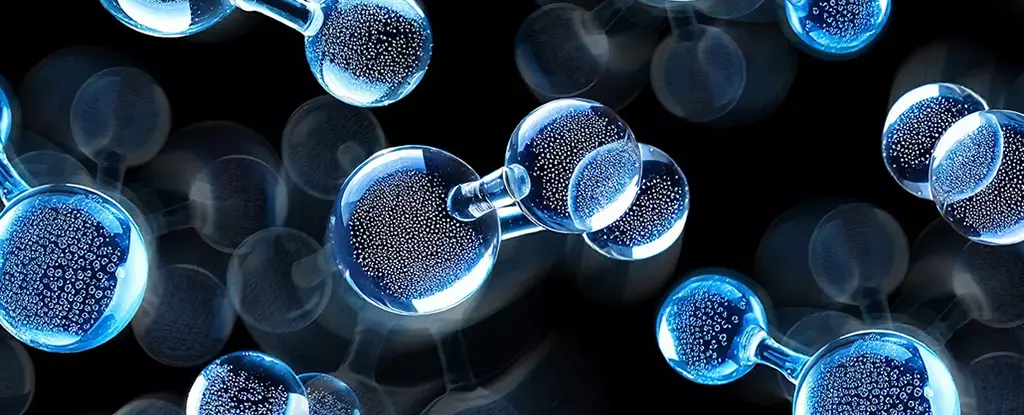The discovery of plastic Ice VII has taken the scientific community by storm, offering a glimpse into the intricate dynamics of water under extreme conditions. While the term might conjure images of a campy film, this represents a critical breakthrough in the study of water, particularly regarding its potential forms in extraterrestrial environments. Scientists predict that such exotic phases could exist on distant planets, broadening our understanding of the universe’s diverse hydrospheres and fostering new areas of research within planetary science.
Plastic Ice VII is crafted under conditions that far exceed those commonly experienced on Earth. To form this substance, water must be subjected to a pressure of approximately 6 gigapascals and heated to around 327 degrees Celsius (620 degrees Fahrenheit). This extraordinary environment compacts water molecules into complex arrangements, resulting in a unique, interconnected cubic structure characterized by a chaotic movement of hydrogen atoms. The processes that govern the transition from ordinary ice to plastic Ice VII require not only intense conditions but also sophisticated experimental techniques to monitor molecular behavior accurately.
Recent experiments conducted by an international team at the Institut Laue-Langevin in France have been pivotal in capturing this transformation. By utilizing high-caliber instruments and advanced measurement techniques such as quasi-elastic neutron scattering (QENS), researchers can probe the nuanced dynamics of water molecules. Unlike traditional spectroscopic methods, QENS allows scientists to observe both the translational and rotational movements of molecules, significantly enhancing our comprehension of phase transitions in water.
One of the key insights from the recent studies is the behavior of hydrogen atoms within plastic Ice VII. Previously hypothesized, this exotic phase had long puzzled researchers, mainly due to challenges in observing the subtle movement of hydrogen. The experiments revealed that, rather than behaving as free-runners, the hydrogen atoms exhibited a “staggered” rotation mechanism. This unexpected behavior suggests that the hydrogen bonds among water molecules undergo a continuous process of breaking and reforming, resulting in a more complex interaction than previously understood.
Maria Rescigno, a physicist at Sapienza University of Rome, emphasized the advantages of QENS in exploring such intricate phase transitions. “The ability of QENS to probe both the translational and rotational dynamics is a unique advantage,” she noted, reflecting how this method has elucidated aspects of plastic Ice VII that remained elusive for so long.
Researchers believe that the existence of plastic Ice VII extends beyond laboratory conditions and may have implications for our understanding of icy celestial bodies such as Neptune or Europa, one of Jupiter’s moons. The ability to recreate and observe the properties of this exotic ice provides valuable insights into the historical events that shaped the climates and atmospheres of these distant worlds.
Moreover, studying how plastic Ice VII transitions from one phase to another illuminates the dynamic processes involved in water under extreme conditions. As Livia Bove, another physicist involved in the study, suggests, the nature of this transition—whether it is continuous and gradual or happens abruptly—raises intriguing questions about the behavior of water in the universe. These findings may prompt new models for predicting how ice behaves on other planets, potentially informing our search for life beyond Earth.
The discovery also opens avenues for further research to deepen our understanding of plastic Ice VII and its implications across various scientific disciplines. By exploring the properties of water and its various forms under extreme conditions, scientists can reflect on broader questions regarding the origins and evolution of planets.
With further advancements in technology and methodologies, researchers are poised to unravel more layers of complexity in water’s behavior both on Earth and in extraterrestrial environments. As the exploration of alien worlds continues, discoveries like plastic Ice VII will play a crucial role in shaping our understanding of the cosmos, potentially leading us closer to answering fundamental questions about the existence of life beyond our planet.
The experimental observation of plastic Ice VII not only solidifies theoretical predictions but also marks an exciting milestone in the broad field of planetary science, providing crucial insights into the nature of water across the universe.



Leave a Reply